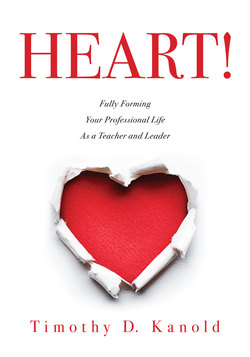Читать книгу HEART! - Timothy D. Kanold - Страница 18
На сайте Литреса книга снята с продажи.
ОглавлениеFINAL THOUGHTS
The World Happiness Report
The ending of this part of the book is about eudaimonia.
Eudaimonia? What is that?
Persons who are emotionally more positive and thus happier, who generally have more satisfying lives, and who live in happier communities, are more likely both now and later to be healthy, productive, and socially connected.
The World Happiness Report 2013 reveals:
Subjective well-being has an objective impact across a broad range of behavioral traits and life outcomes, and does not simply follow from them. They observe the existence of a dynamic relationship between happiness and other important aspects of life with the effects running in both directions.32
The report goes on to state:
In the great pre-modern traditions concerning happiness, whether Buddhism in the East, Aristotelianism in the West, or the great religious traditions, happiness is determined not by an individual’s material conditions (wealth, poverty, health, illness) but by the individual’s moral character. Aristotle spoke of virtue as the key to eudaimonia, loosely translated as “thriving.” Yet that tradition was almost lost in the modern era after 1800, when happiness became associated with material conditions, especially income and consumption.
This chapter explores that transition in thinking, and what has been lost as a result. It advocates a return to “virtue ethics” as one part of the strategy to raise (evaluative) happiness in society.33
Happiness in our professional workplace is a positive emotional state of being, a state your students and colleagues need you to be in every day. But it is not nirvana. And it is not free. It comes with a price. It is a tax on your energy, engagement, and ability to respond when all you really want to do is rest and, sometimes, weep.
Passion, love, compassion, hope, joy, gratitude, and stability—these are all elements of happiness and a better present. There is a balance of emotions, perseverance, and purpose for finding happiness and achievement in your work and in connecting or reconnecting to your calling as a teacher and leader of others—students, parents, and colleagues.
MY HEART PRINT
Reflect on part 1 and the past seven chapters. What are your primary takeaways?
Include two or three possible actions you can take as you continue your journey in this important aspect of your work life.
Think of the next steps as I will … statements, and write them down as you measure your personal heartprint during this stage of your career.
Know there will never be enough time to meet the demands and all that is required in your daily professional work as a teacher and leader. A person who delivers above and beyond the norm as a normal way of professional life understands that time is a constant. It is a fixed quantity—twenty-four hours in one day.
That same person, however, also understands that energy is a key ingredient to full engagement at work. Your energy is as variable as you allow it to be, and your engagement in your work is a choice. Your energy becomes the secret ingredient to your engagement in work and in life.
The following resources are instrumental in the support of our work together in part 1. Depending on your personal interests, you may use these resources as you continue to expand your knowledge base and the knowledge base of your colleagues. You may also visit go.SolutionTree/HEART to access direct links to the websites and download three additional chapters related to part 1.
Part 1: H Is for Happiness
Resources
Brown, B. (2012). Daring greatly: How the courage to be vulnerable transforms the way we live, love, parent, and lead. New York: Penguin.
Grant, A. (2014). Give and take: Why helping others drives our success. New York: Penguin.
Hattie, J. (2012). Visible learning for teachers: Maximizing impact on learning. New York: Routledge.
Rath, T., & Clifton, D. O. (2004). How full is your bucket? Positive strategies for work and life. New York: Gallup Press.
Seppälä, E. (2016). The happiness track: How to apply the science of happiness to accelerate your success. New York: HarperCollins.
Additional Resources
• Brené Brown’s website: www.brenebrown.com
• Emma Seppälä’s website: www.emmaseppala.com
• The World Happiness Report 2013: http://unsdsn.org/wp-content/uploads/2014/02/WorldHappinessReport2013_online.pdf
• The World Happiness Report 2016: http://worldhappiness.report
• More on student demographics and populations from the National Center for Education Statistics: http://nces.ed.gov/fastfacts/display.asp?id=28
• The Positive Impact Test and more resources on positive impact statements: http://bit.ly/2atJSB4
• More on John Hattie’s work: http://visible-learning.org
• More on Adlai E. Stevenson HSD 125’s story: www.d125.org/about
